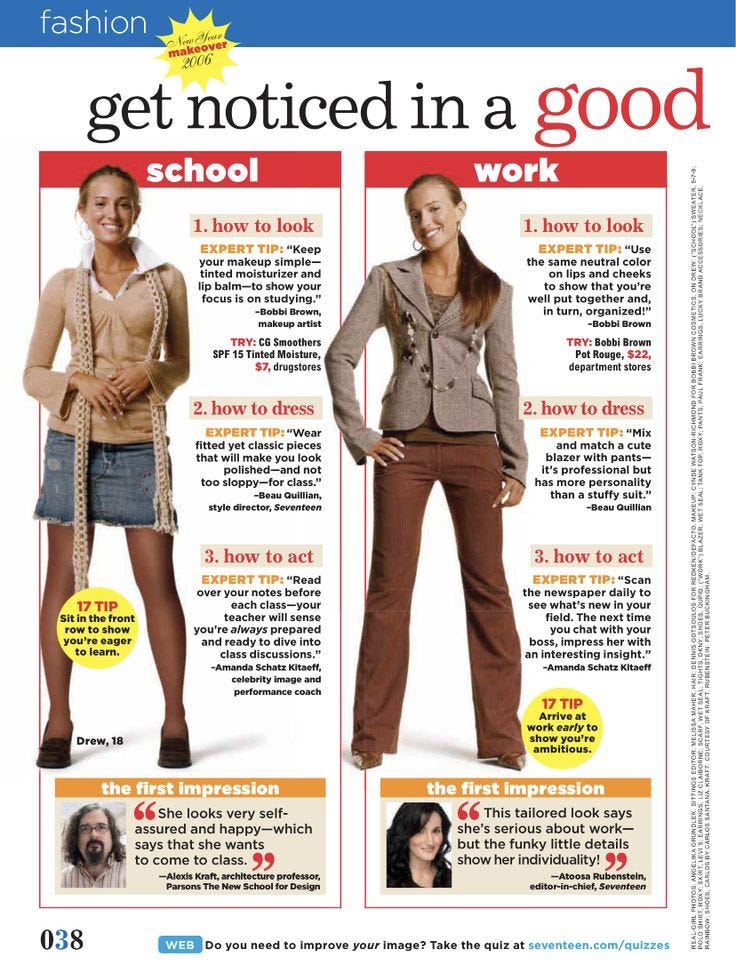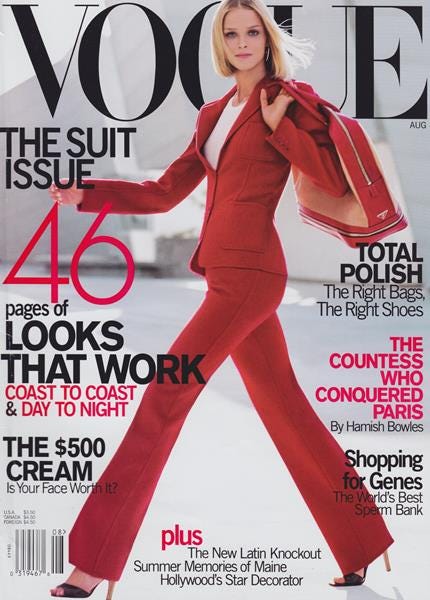I am not a trend forecaster. I am, however, a trend observer. I like to think I’m exceptionally observant when it comes to clothing, and I’m in a unique position that offers me a lot of insight into what’s going on in the real-life fashion world. As a vintage dealer, I see consumer interest from a few different vantage points. I meticulously track what I’m buying and selling for my business, and take notice of what other sellers are investing in. When I’m working retail at vintage markets or in the brick-and-mortar collective I’ve part of, I spend a lot of the day just watching people shop. I take notice of what pieces draw attention, what items are tried on often but not purchased, how people react to fabrics and colors and construction and pricing.
Being based in New York is both exceptionally helpful and particularly unhelpful at the same time. Living in a highly dense fashion hub often means that trends start here, or that they catch on widely before appearing elsewhere. Other times, the city and the subcultures I’m part of prove to be a very small bubble. What feels ubiquitous here never spreads outside of my immediate social circles, skewing my perception of what’s actually popular with a wider audience. I also spend a lot of my time in vintage-centric spaces, which isn’t necessarily a reflection of the wider world of fashion.
If you’ve been with me for a while, you know that nothing in fashion is ever a coincidence. Trends are manufactured, sponsored, and launched for a variety of reasons - nostalgia, politics, resistance, or just plain old capitalism. This piece is dedicated to outlining some of the most noticeable fashion shifts I’ve noticed in the past year or so, along with some personal notes about the factors I think may be contributing to these changes. I’m by no means the first person to note or write about most of these, but they are the ones that I’ve personally seen in real life.
I’m writing this piece as a way to make connections between clothing and culture, to analyze how and why social and political ideas affect the way we present ourselves. I don’t intend for anything I include here to influence what you’re buying, what you’re purging, or even what you might be looking to source as a fellow vintage dealer. Instead of looking at our clothes through the perspective of trendiness or popularity, I’d like to encourage us all to step back and look at clothing as a vessel for what we’re collectively feeling and thinking about.
The Denim Downturn
People are still wearing jeans, people will always be wearing jeans, but I’ve noticed that we’ve slowed down on buying denim. The past year saw a few denim trends, most notably Western fashion (a la Cowboy Carter) and the seemingly adjacent rise of barrel jeans, along with a renewed interest in selvedge denim. But overall, I’ve seen a the general desire for denim wane from previous years.
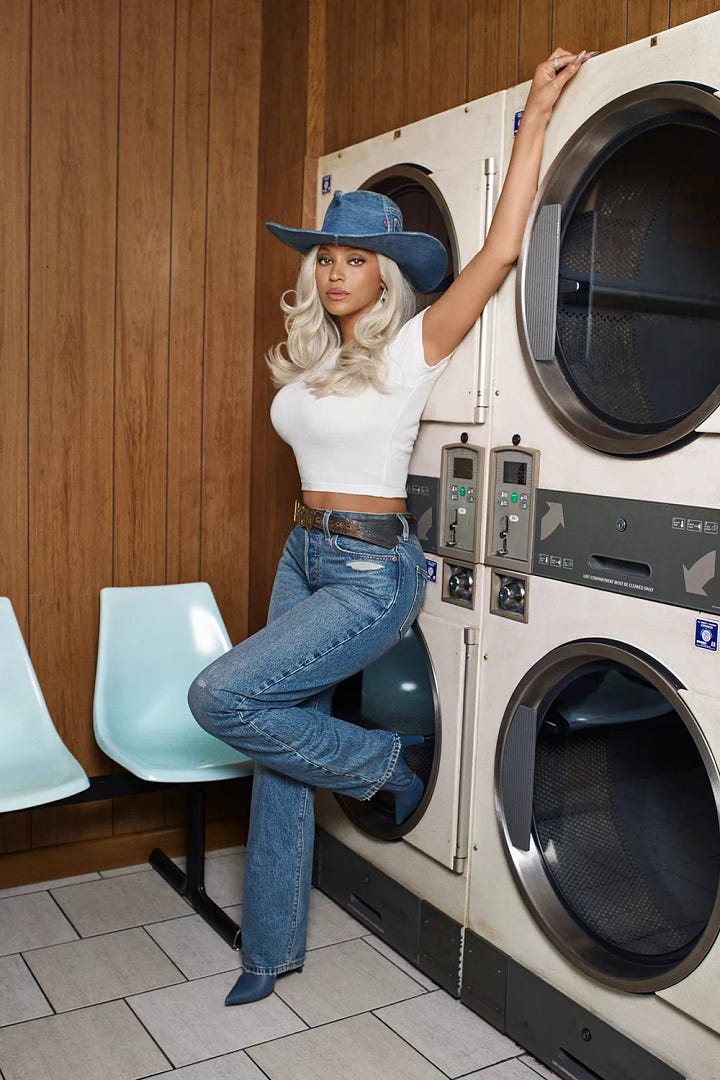
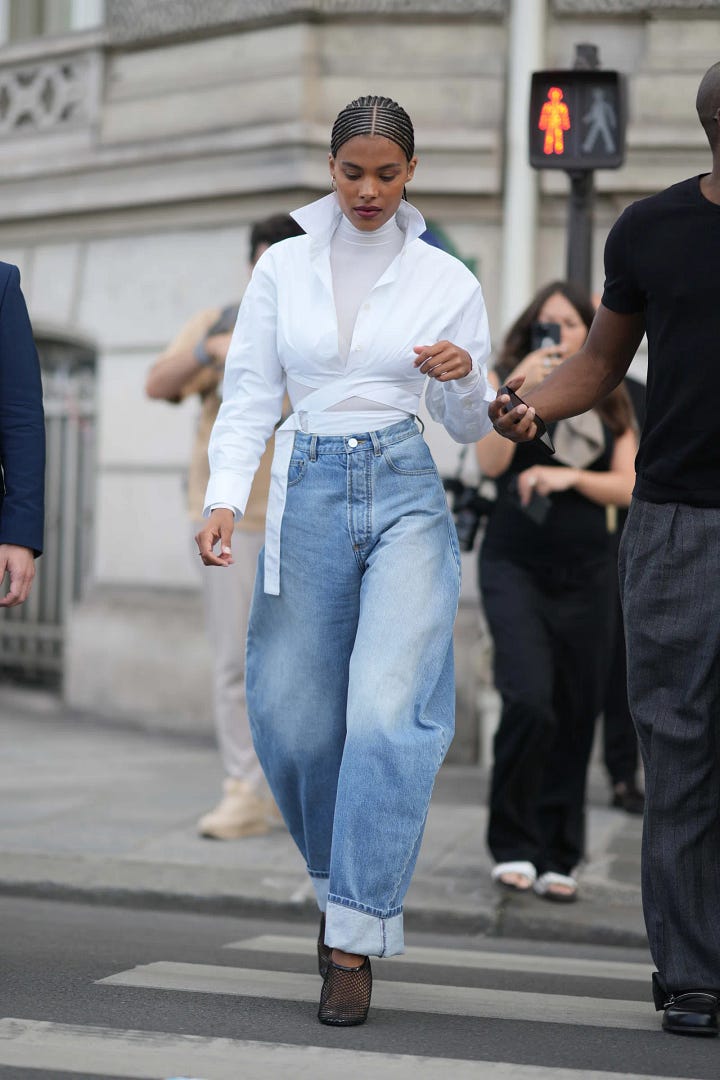
Denim jackets fell out of the trend cycle years ago, with a hot, “new” casual coat taking center stage in its place each season. Chore coats, barn coats, and utility jackets have mostly replaced the denim jacket as a relaxed, utilitarian alternative.
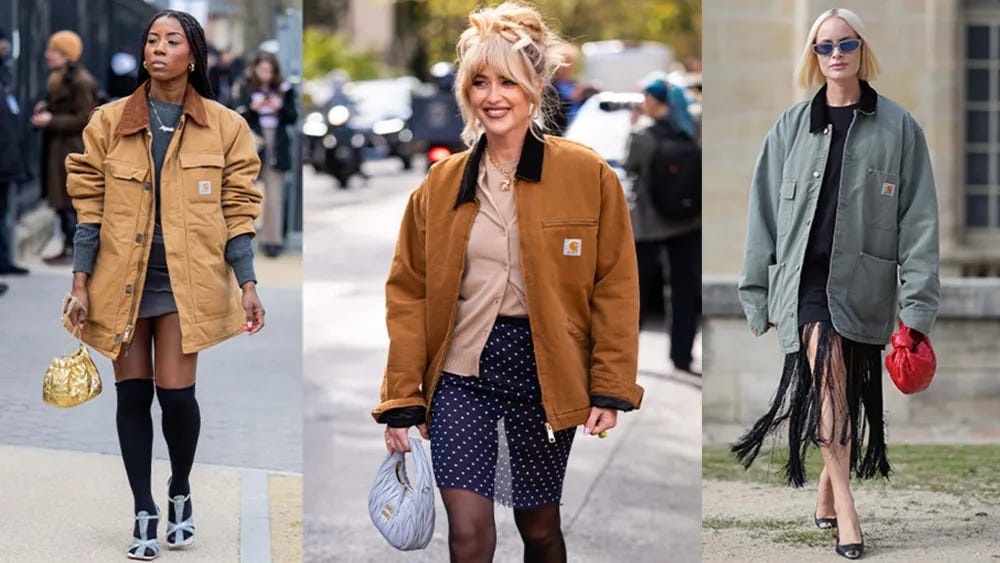
When it comes to bottoms, I’ve noticed shoppers opting for more elevated options. Trousers and dressier pants are selling very well, as well as skirts (more on that below). Overall, casual pants like jeans, cargos, and knits seem to be less in demand.
Office Attire
Though it feels like we’ve largely moved past the rapid-fire “_____-core” internet trend cycle, I have seen the “Office Siren” trend really take hold in both real-life shopping habits and in the larger fashion atmosphere. This particular aesthetic seemed to really catch on with young women. Pinstriped trousers, Y2K blouses, and ties are popular pieces in current styling. More brands seem to be experimenting with suiting for all genders, including incorporating more traditionally masculine shapes for women.
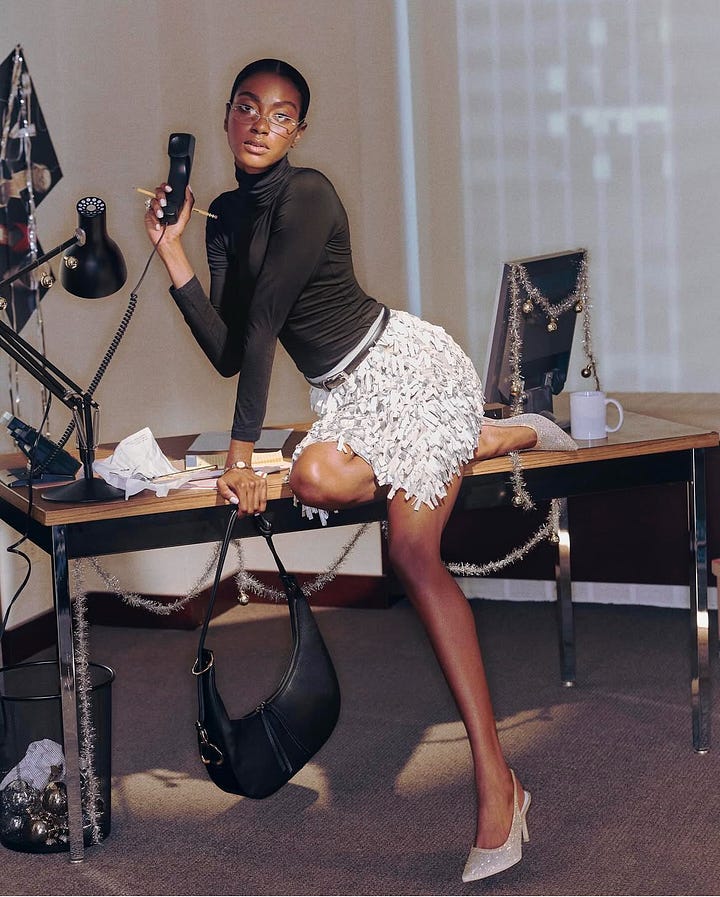
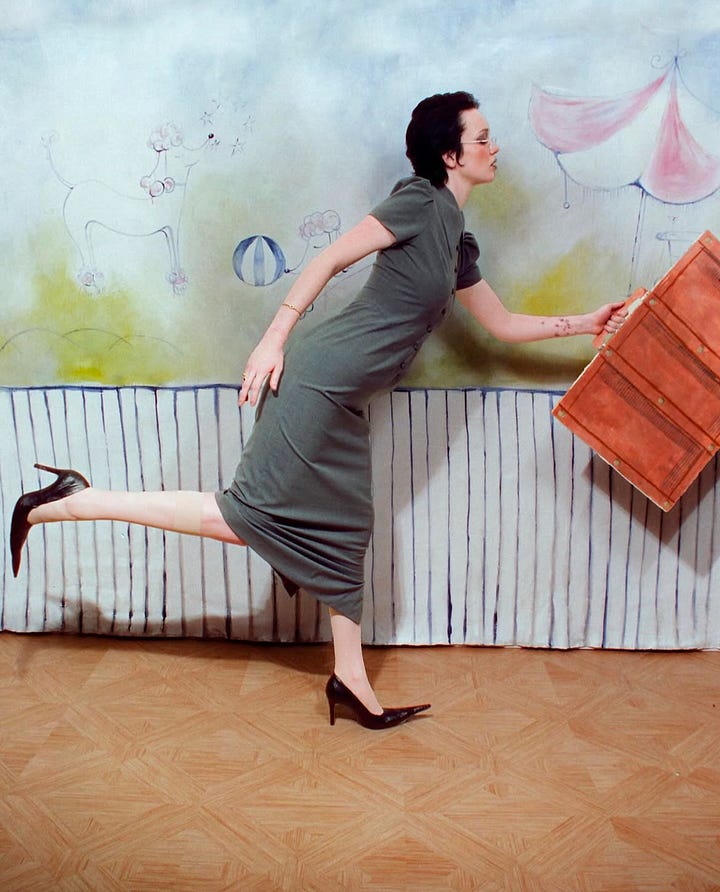
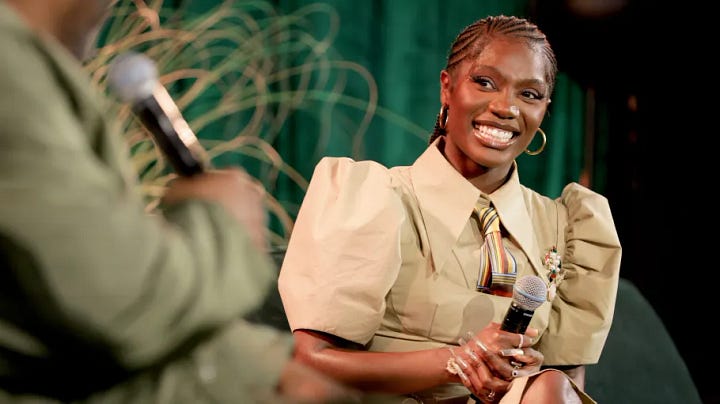
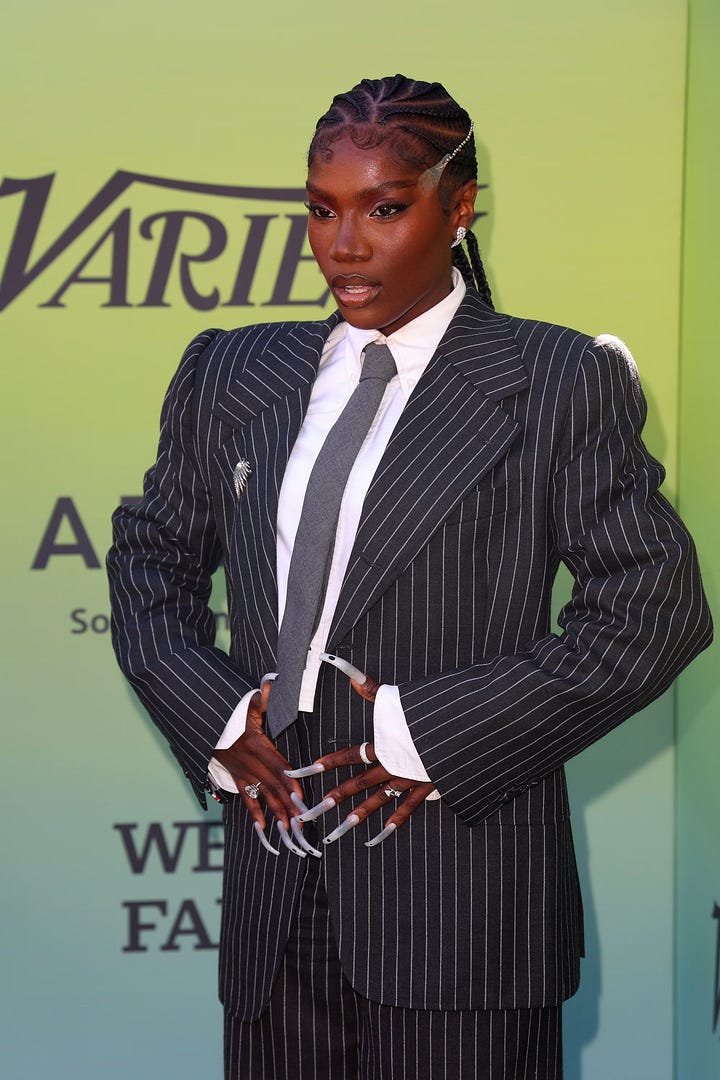
Popular eyeglasses are currently in shapes and styles that could be described as nerdy or studious. Smaller frames in square and oval shapes have completely taken over the tinted lenses and oversized styles that felt ubiquitous just a couple of years ago.
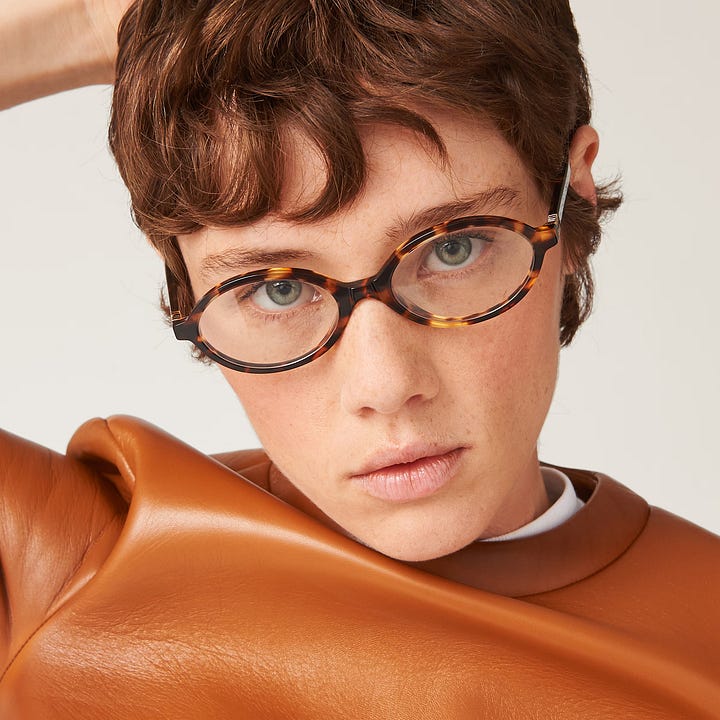
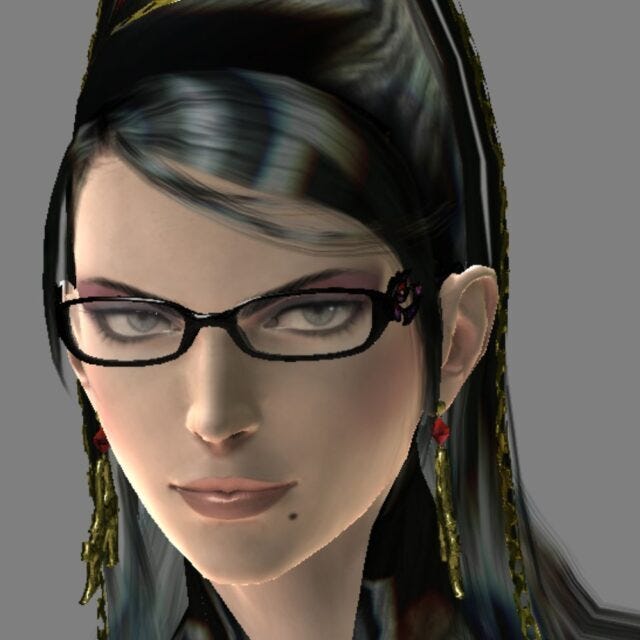
My Thoughts:
I think much of this trend stems for a very special brand of nostalgia - the kind that comes from missing out on something that you saw as a kid, but never actually got to participate in. Many young women have entered a workforce that consists of digital meetings, hybrid offices, or lonely hours of freelance work. The cubicles and pant suits they grew up seeing on TV failed to materialize in their adult lives, and there's probably some bittersweet feelings about never experiencing the specific brand of adulthood promised to earlier generations.
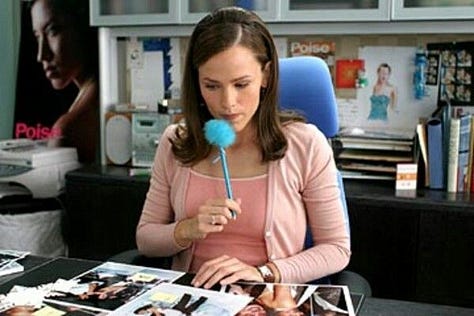
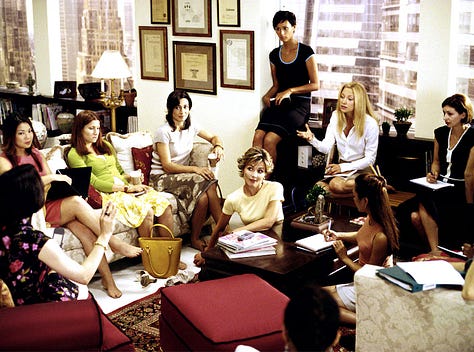
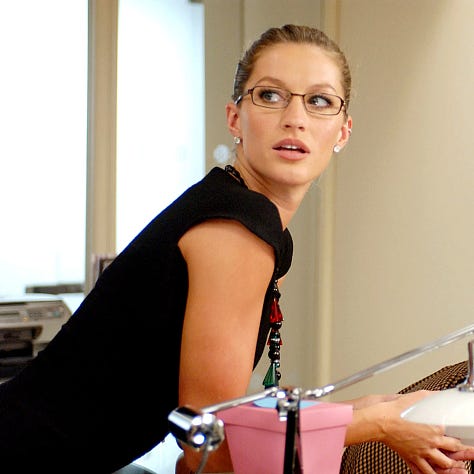
As a magazine-obsessed Millennial, I spent hours of my youth pouring over fashion spreads that laid out the often indiscernible rules of adult dressing. According to the experts, being “appropriate” was absolutely dire, and “day to night” dressing would become a crucial part of mature life.
My 13-year-old self didn’t know that I would eventually grow up to intentionally avoid ever working a 9-to-5, but many people today aren’t even given the option to choose. With the rise of online work and the gig economy, the “adult uniform” is changing more rapidly than we can keep up with.
When it’s not necessary, there is something romantic about dressing “for work.” There’s a certain appeal in the power of a good suit, in the modest but sexy fit of a pencil skirt, of switching from flats to heels next to the subway entrance by your office. I’m very grateful I’ve never been required to conform to any of these style restrictions, but I do understand why you’d want to play with the aesthetics for fun.
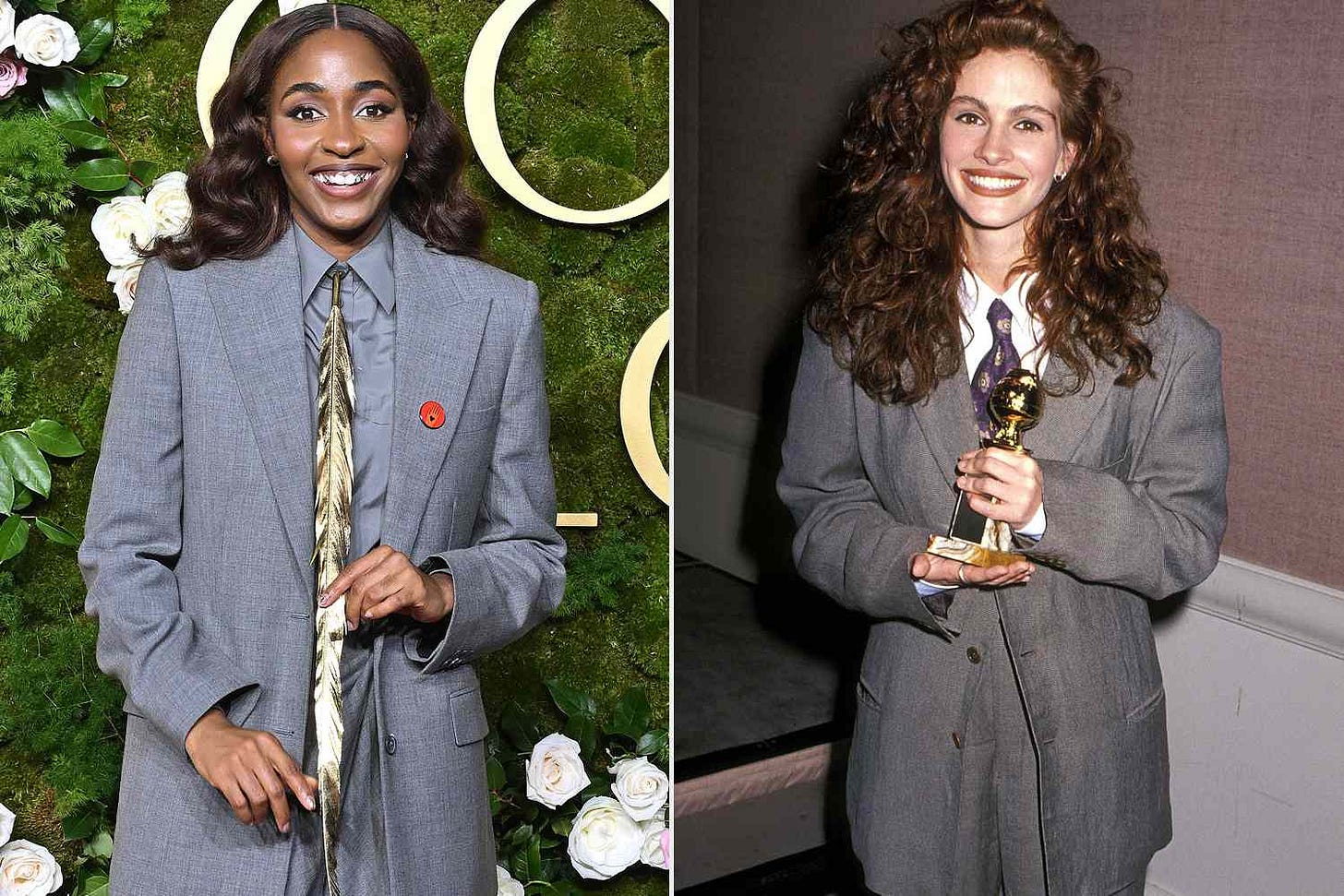
Fashion tends to swing on a pendulum, and there are various recently popular aesthetics that office attire seems to function as an opposite to. Writer Hannah Jackson said this for Vogue: “The girlhood trend reined supreme in 2023. Lolita, The Virgin Suicides, Simone Rocha’s fantastical cake-like dresses, Molly Goddard’s cotton candy-esque tulle confections, and Liang’s penchant for girly appliqués were all par for the course. Tenderness reigned supreme; women were encouraged to embrace their femininity and sensitivity. But things went astray when silly trends like “girl math,” and “girl dinner” slid down the slippery slope of gender essentialism, women falling into self-infantilization, and glorifying patriarchal attitudes toward labor.”
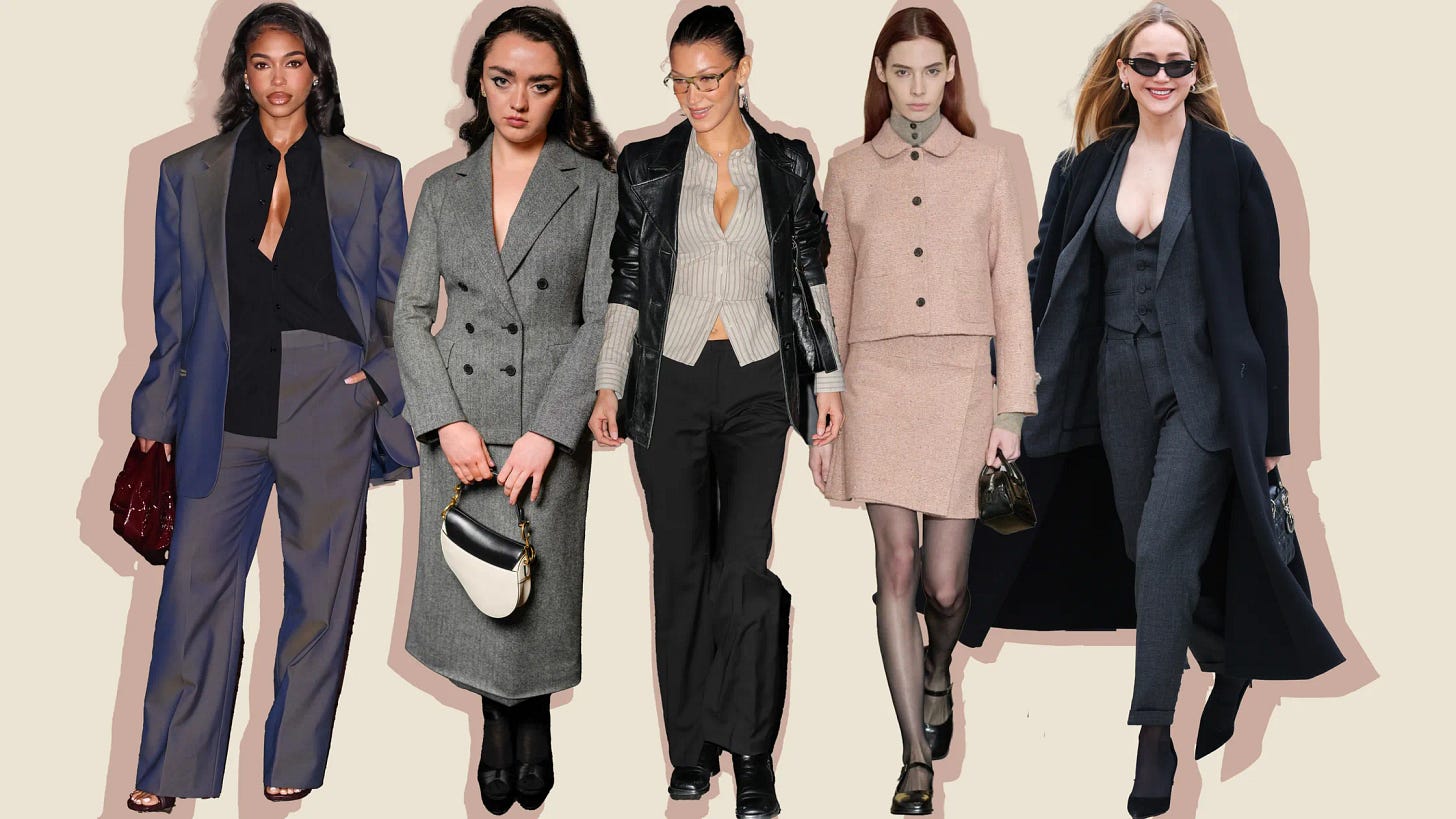
We’re also still seeing the numerous cultural effects of the ongoing pandemic. Years of social restriction and dressing for home have people understandably yearning for the opposite - going out, and dressing to be out. Jeans feel like a safe in-between, and I’ve noticed significantly less denim in the most discussed and referenced styles of the last year or two.
Skirts
I actually first noticed the shift this summer while listening to an episode of Pre-Loved Podcast that featured an interview with Seven Wonders Collective owner Melissa Blumberg. As a vendor in Melissa’s collective, I was especially interested in hearing about her experiences in vintage.
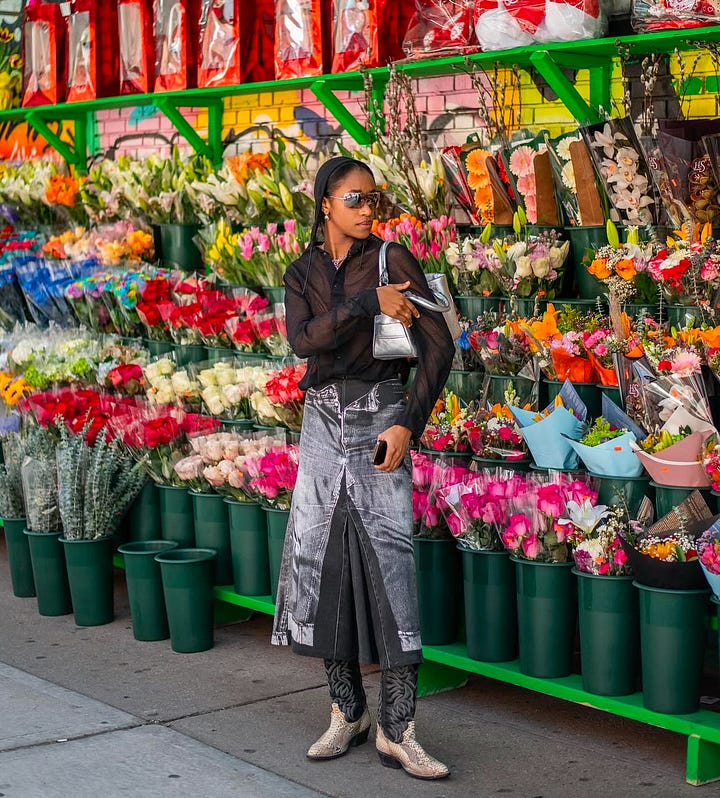
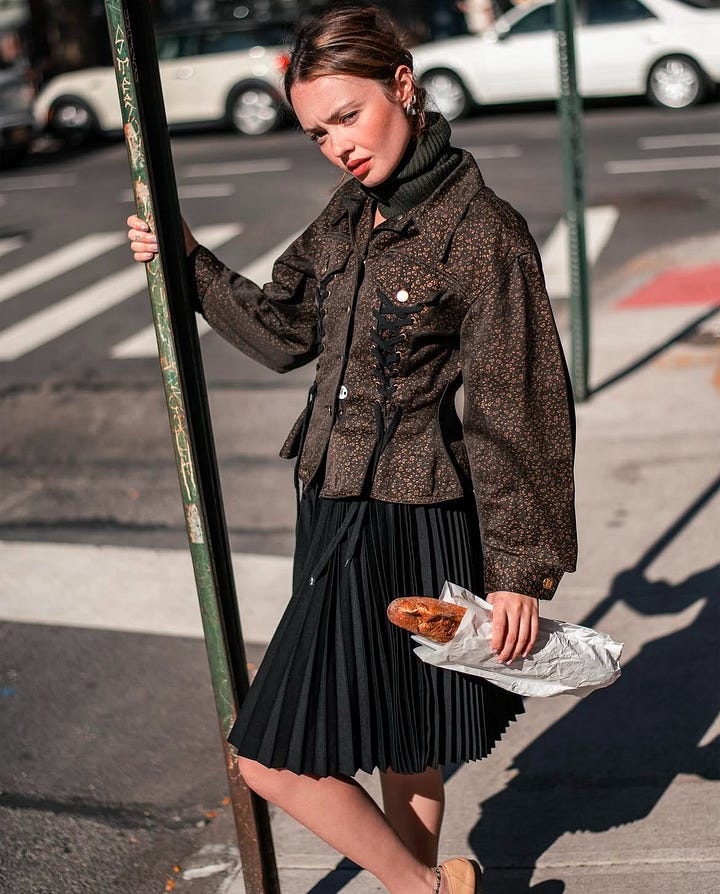
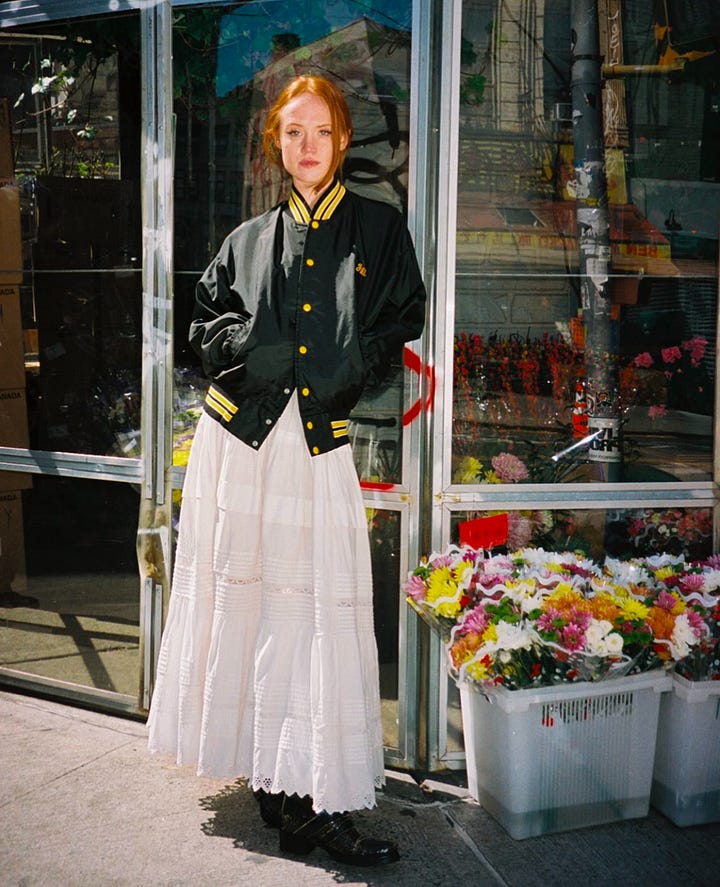
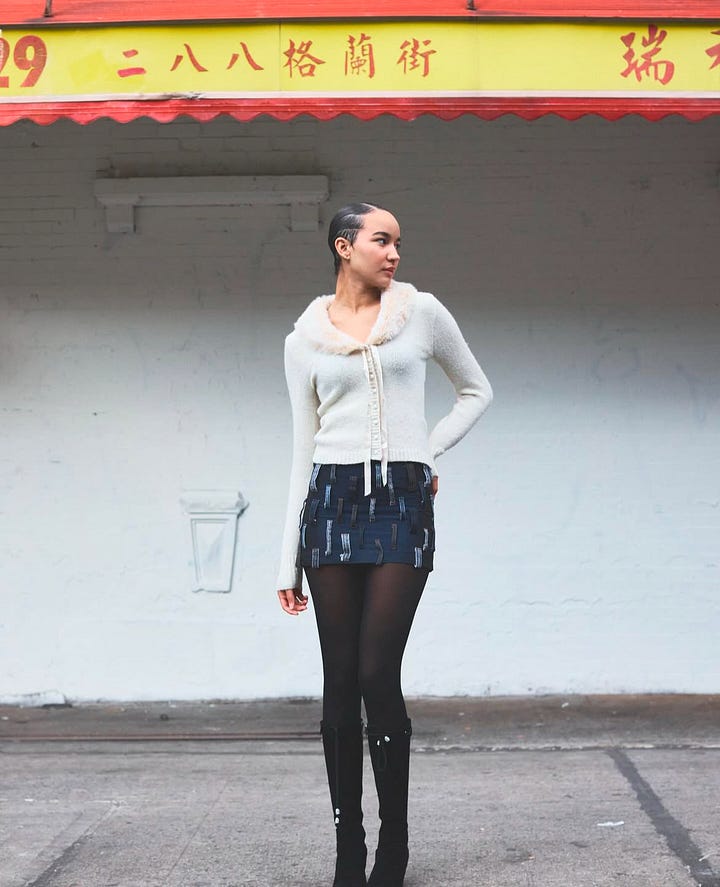
She pointed out that skirts were doing noticeably well after years of pants-supremacy, and I realized that she was totally right! Being part of the collective means I have access to all of the sales data for the Lower East Side store, including what the other 20-ish vendors are selling. Melissa and I aren’t the only sellers moving skirts - they’re popular for everyone in the store.
Keep reading with a 7-day free trial
Subscribe to 1-800-VINTAGE to keep reading this post and get 7 days of free access to the full post archives.





